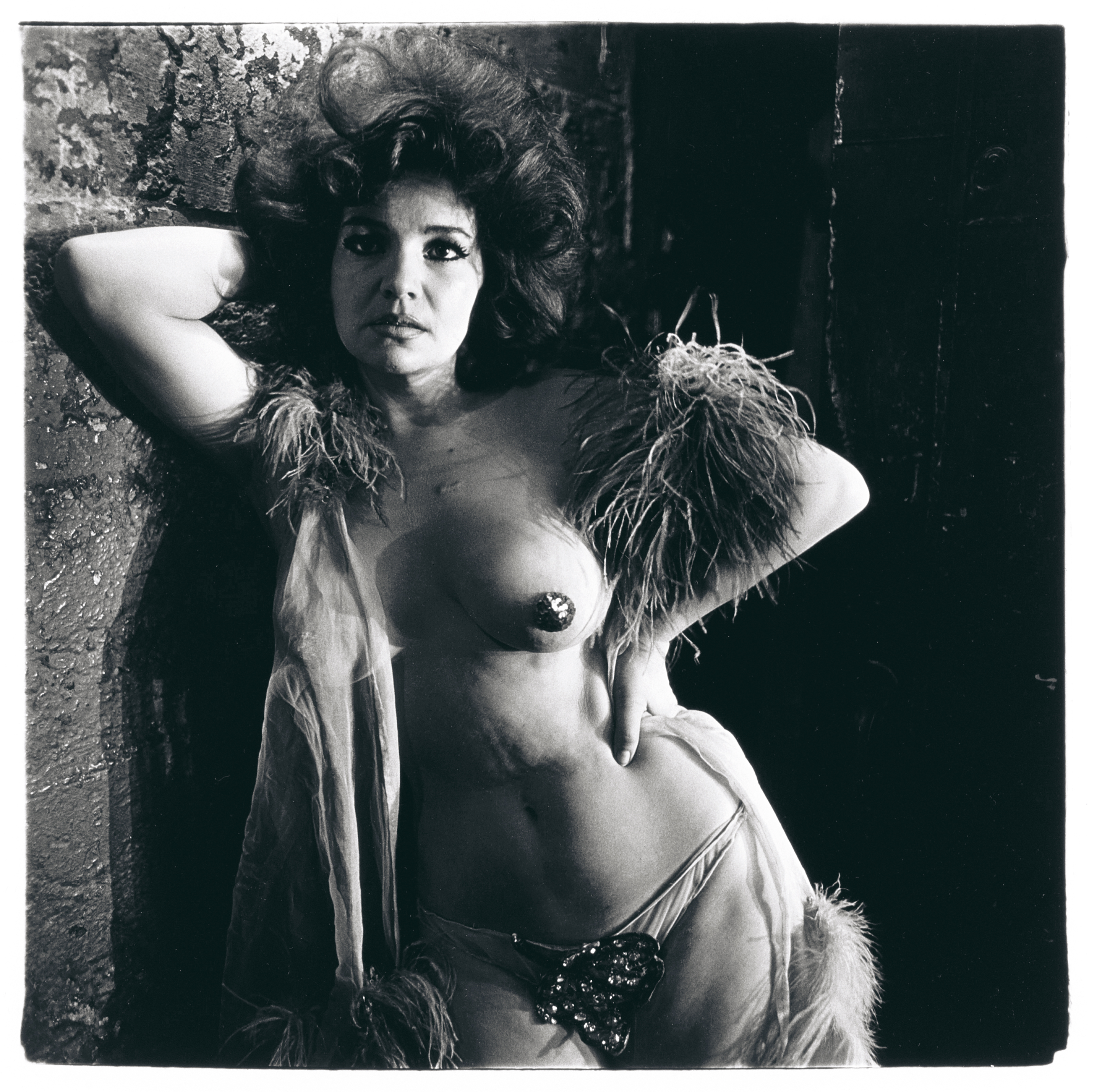(THIS ARTICLE IS MACHINE TRANSLATED by Google from Norwegian)
EXHIBITION: Lisette Model, Diane Arbus, Nan Goldin. Galerie Westlicht in Vienna.
The exhibition Model Arbus Goldin the photo gallery WestLicht in Vienna takes us on a nostalgic journey into the lives of outsiders and everyday people in the past.
Three world-renowned documentary photographers – Lisette Model (1901 – 1983), Diane Arbus (1923 – 1971) and Nan Goldin (b. 1953) – exhibit their contemporary photographs of the imperfections of marginalized and ordinary people. The photographs are intimate and diverse and arouse laughter, sadness and curiosity about each other.

The ordinary
The Viennese Lisette Model, who settled in New York after visiting both Paris and Italy, depicted the weaknesses of 40 figures in everyday situations. She is best known for her street photographs of the ordinary American. From 1951 until her death in 1983, she worked as a teacher at the New School in New York, where, among others, Diane Arbus was her student.

The ordinary in her works is strikingly beautiful in its simplicity. She uncovers and confronts the subject using snapshots to expose moments of truth between the photographer and the photographed: "I am a passionate lover of the snapshot, because of all photographic images it comes closest to truth."
She makes me think of the time we live in – unfortunately my head is quickly filled with dark thoughts. "Was it better to live then than now?" I ask as the nostalgia suddenly strikes me as the sight of golden pink clouds at sunset. It is a good but temporary feeling that follows me as I go from one work to another.
Freaks and intimacy
So New Yorker Diane Arbus was a Model student in 1956, and here she learned all about the technique that would define the rest of her career with distinctive front portraits of the subject in square format: "It was my teacher, Lisette Model, who finally made it clear to me that the more specific you are, the more general it'll be. ”
"These pictures come out of relationships, not observation."
Arbus was concerned with identity and rarities: "Freaks was a thing I photographed a lot. (…) Most people go through life dreading they'll have a traumatic experience. Freaks were born with their trauma. They've already passed their test in life. They're aristocrats. ”
Arbus focused on the subject rather than the photograph itself, portraying marginalized people such as transsexuals, strippers and dwarves – in their homes, in the workplace, in parks and streets. She established a good relationship with those she photographed, and some of them she followed for several years. She said, "These pictures come out of relationships, not observation."

Just as Arbus' works are related to Models, Nan Goldin is inspired by Arbus; she also praises the outsiders in the community. Neither Model, Arbus nor Goldin had existed without each other.
Goldin's work depicts New York's underground culture and the LGBT environment of the late 70s. It is breathtaking to get a glimpse of these people's intimate moments in front of the mirror, in the shower, when they have sex, take baptism and so on, in her world-renowned photo series "The Ballad of Sexual Dependency".
I ask, "Was it better to live then than now?"
A warmth fills me when I see her distinctive snapshot color photographs. They give me the feel of an Insta story (Instagram photo series) – they are honest, vibrant, unpretentious and intimate: “For me it is not a detachment to take a picture. It's a way of touching somebody – it's a caress. ”
On the other hand, I can understand the criticism Goldin has received for romanticizing baptism. These people, who are in reality addicts, look interesting and beautiful through her eyes. If, on the other hand, I had met some of them on a street corner while injecting heroin, I would probably never have thought the same. But here I want to sit with them and join in the play. Goldin herself admits that she had a romanticized image of baptism when she was young: "I had a totally romantic notion of being a junkie. I wanted to be one. ”
taboos
There is one image in particular that strikes me as raw and honest, Goldins Nan One Month After Being Battered (1984), in which she shows her bruised face full of bruises after being beaten up by her boyfriend. Here, she uses the camera as a political tool to break the silence around domestic violence.

The digital revolution, with its abundance of photographs on Facebook, Instagram, Snapchat and so on, makes me appreciate this exhibition; it reminds me of the unique meaning of photography while giving me associations to an Insta story.
In our time, most people own a camera, whether on iPhone, iPad or Mac – we are all photographers and take pictures of everything. Every day we are exposed to photographs, which unfortunately makes it less unique. Digitization has ruined the charm of photography.
When I was a kid, we used analog cameras. We took one picture in a situation, delivered it for development and waited several days for the result. It wasn't as easy as it is now. The photos didn't look perfect, since we only took one and not hundreds, and we didn't edit them with all sorts of filters. We didn't release them to the world to get likes, but put them in frames or put them in albums at home – it was more personal.
Model, Arbus and Goldin are three important photographers of our time, as they use snapshot photography as a social, psychological and political tool to convey their message, to inspire all Instagram photographers out there. They put the importance of photography into perspective. In addition, their photographs get stuck on the retina.
The exhibition lasts
March 24, 2019.


